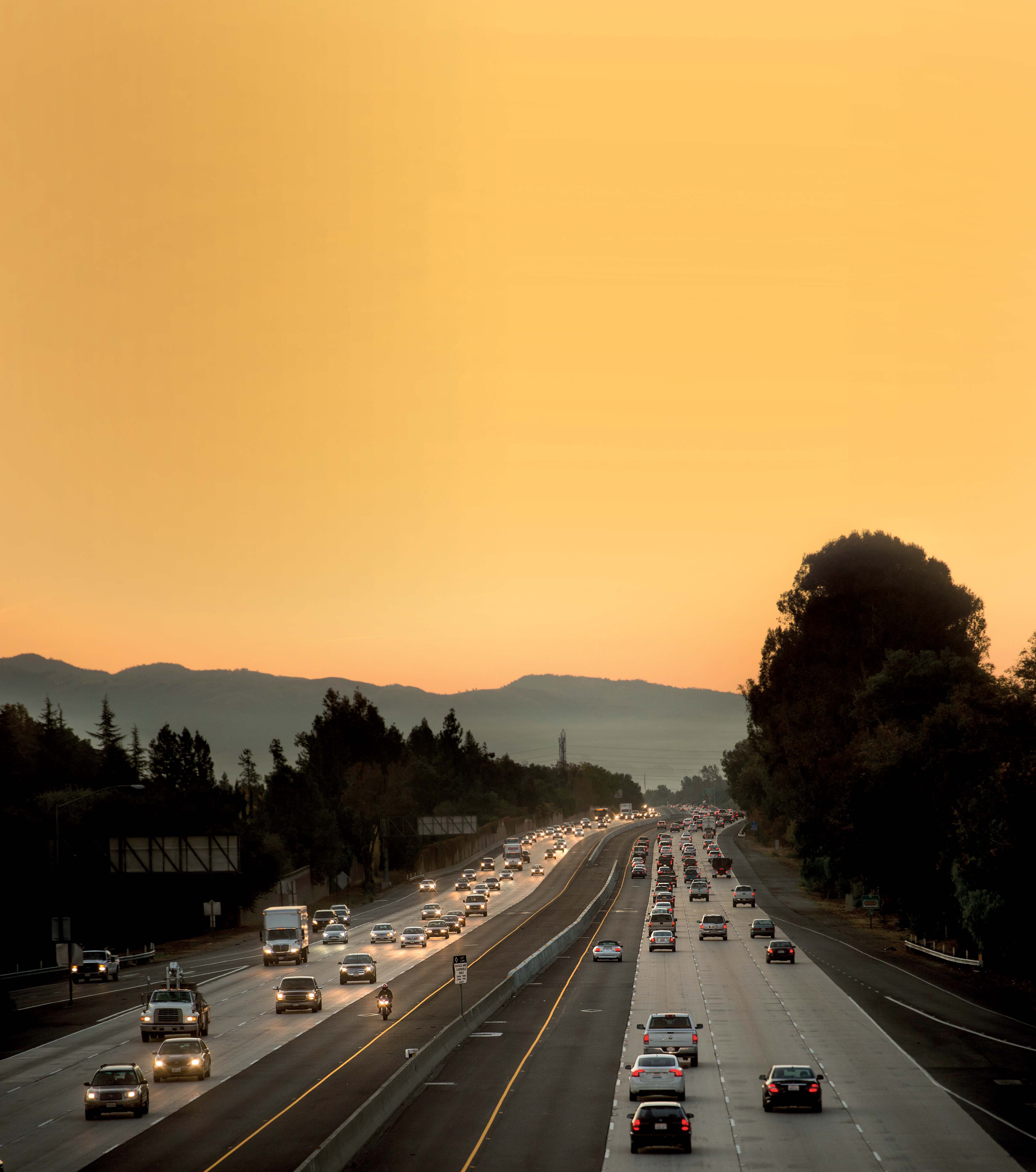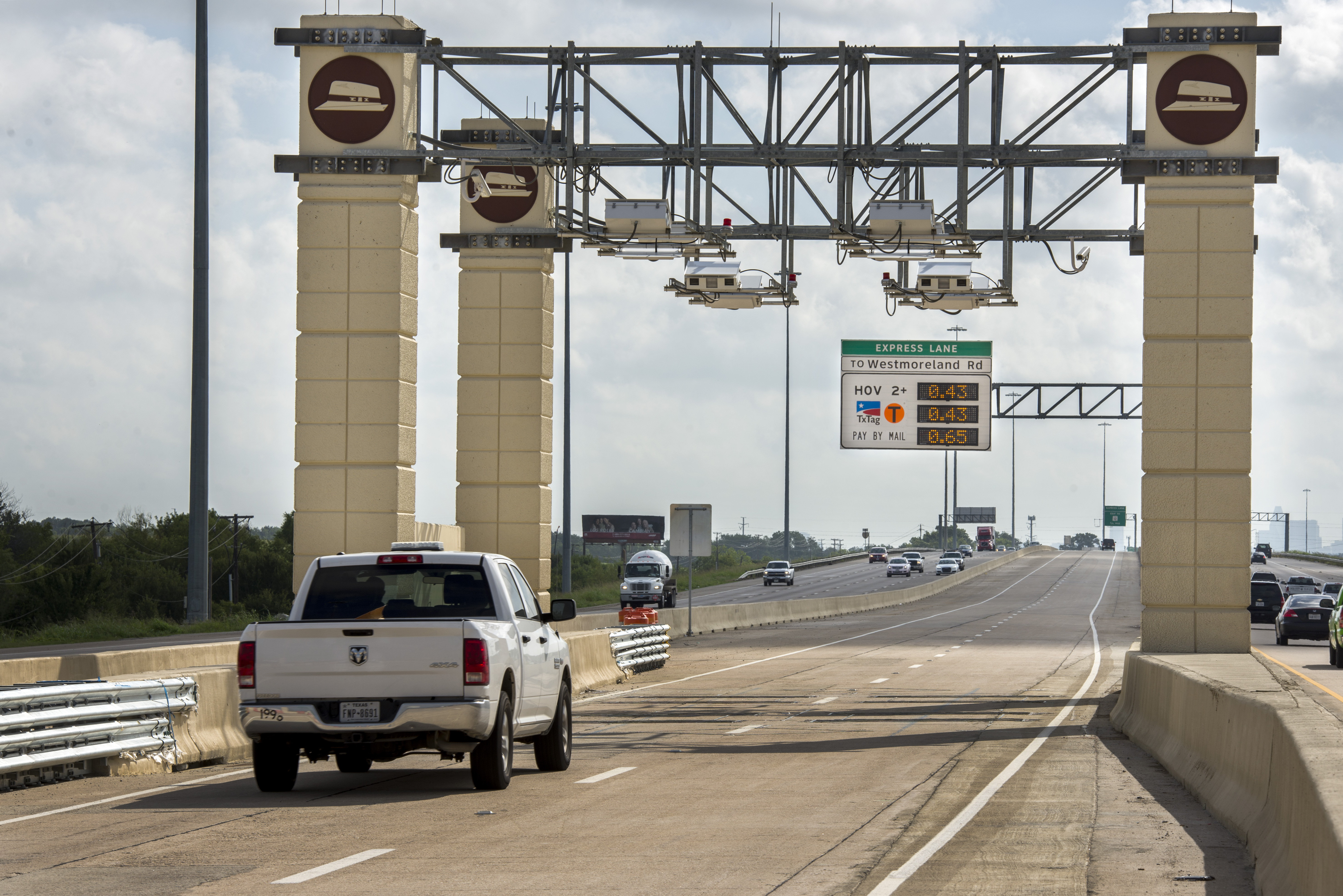
Wisconsin's four-year HOT lanes pilot project, launched in May 2008, cost US$18.8 million to construct. Halfway into the project, which uses variably priced, or dynamic, tolling to improve highway efficiency, the benefits are mounting.
The problem was obvious, and frustrating, to anyone who ever sat in bumper-to-bumper traffic on State Route 167 and watched a lone car whiz by every 20 seconds or so in the carpool lane.But for planners at the
High-Occupancy Vehicle (HOV) lanes had been popular in the Seattle area for years, typically moving one-and-a-half times as many people as a general-purpose lane on major corridors, such as I-5 and 1-405 during rush hour.
SR 167 was different; its HOV lane was underused, even during peak traffic periods when the general-purpose lanes were jammed. Maintaining express trips for carpools and buses was critical for highway efficiency, but how could WSDOT make better use of SR 167's HOV lane without clogging it? When the Washington State Transportation Commission posed that question in January 2003, California and Texas already were using High-Occupancy Toll (HOT) lanes to make carpool lanes more efficient. Minnesota wasn't far behind. The commission saw promise in the ability of HOT lanes to maintain optimal traffic flow. Two years later the Legislature and Governor Chris Gregoire directed WSDOT to begin a four-year pilot project to study the benefits of HOT lanes and variably priced, electronic tolling.
When WSDOT launched the SR 167 HOT Lanes Pilot Project in May 2008, solo drivers had a new option. By paying an electronic toll with a Good To Go! transponder, single-occupant vehicles could also use the HOT lane when space was available. Carpools, buses and motorcycles continued using the HOT lane toll free with no transponder required.
Today, the system works much a like a flow valve mechanised by dollars and cents. As traffic on SR 167 increases, so does the toll rate, and vice versa. It all happens automatically, controlled by a computer that calculates real-time traffic data, such as traffic volume and speed, collected by sensors embedded in the highway.
The toll ranges between 50 cents and $9. After some fine tuning of the computer algorithm during the first couple months of HOT lane operations, the average toll remained around $1 through the first year.
For the pilot project, WSDOT converted a single HOV lane to HOT in both directions on SR 167. The facility stretches 14.5km southbound and 19.5km northbound between Renton and Auburn, an area of suburban-to-rural communities southeast of Seattle in King County.
The HOT lane is separated from the general-purpose lanes by double solid white stripes that are illegal to cross. Drivers access in and out of the HOT lane in zones marked by a single dashed line. Enforcement is conducted visually by the Washington State Patrol.
Cost and benefit
Shortly before HOT lanes began operating, highway tolling in any form had not been seen in Washington State for a generation. Even so, Washington drivers understood how tolling could pay for important infrastructure, such as an urgently needed bridge.When the new Tacoma Narrows Bridge opened in July 2007 with toll booths and electronic tolling, commuters celebrated. With the added capacity, travel speed across the mile-wide Narrows suddenly jumped from 40-80km/h (25-60mph), and drivers eagerly signed up for electronic tolling.
When HOT lanes opened the following May, making the connection between an optional toll and corridor efficiency wasn't as easy for commuters on SR 167. Before the project got off the ground, WSDOT's HOT lanes development team anticipated a learning curve among solo drivers. They projected that toll revenues would build up over time, and the first year might end in the red.
Their primary concern the first year was to get the message out: HOT lanes are all about moving more people and vehicles to make the whole corridor more efficient.
Why SR 167 was chosen for the pilot project
• Morning back-ups typically begin 5.30-6.00am
• Pre-HOT lane traffic speeds as low as 20mph in non-HOV lanes
• The SR 167 HOV lane accommodated as many as 450 more vehicles before it reaches capacity
• The entire SR 167 corridor had room for up to 13 per cent more people and vehicles
• HOT lanes offered up to 40 per cent more vehicles access to the HOT/HOV lanes
• HOT lanes preserve priority status for transit and car pools All improvements located within the existing right of way
First year pilot project report card
• More than 30,000 individual 'Good to go!' customers paid to drive in HOT lanes
• Traffic volumes and speeds increased in all lanes of the project area
• The average number of daily tolled trips increased nearly every month
• Average daily revenue increased nearly every month
• Average toll rate paid was about $1
• Carpool and transit travel times remained as they were in HOV lanes
• The HOT lanes appear to be as safe as HOV lane HOT lanes on SR 167 cost $18.8 million to construct. Funding included $5 million from the
"Our projections indicated that it would take some time to build a strong customer base, but by the end of our four-year pilot period we would be operating in the black," says WSDOT Toll Division Director Craig Stone. "We couldn't predict that we would be launching HOT lanes just as gas was reaching $4 a gallon."
While SR 167 drivers were getting their first taste of variable tolling, fuel prices soared and driving became an expensive convenience for many commuters. Towards the end of 2008, the nation's economic outlook had grown dismal. There were huge layoffs throughout the Puget Sound region. For several months, traffic volumes dropped on most major corridors in the Seattle area, and a quick escape from congestion seemed less valuable than it used to be.
After the first year of the pilot project, gross toll revenue totalled $320,000, but HOT lanes were still growing in popularity, as planners had predicted. From May 2008 through December 2008, revenues averaged $25,500 per month. From January 2009 through April 2009 the average grew to $28,200 per month.
Getting more from the infrastructure you have is part of WSDOT's 'Moving Washington' strategy for fighting congestion: adding capacity strategically, operating efficiently and managing demand.
Objectives achieved
Despite the challenges, the SR 167 HOT Lanes Pilot Project achieved several important objectives in its first year. The average number of weekday tolled trips continued to increase from month to month, and drivers saved seven to eight minutes for about $1 on average during the weekday peak hour. In April 2009 HOT lanes had 1,710 trips per weekday, compared to 1,050 trips per weekday in May 2008.In the HOT lane, average peak-hour traffic speeds increased about 8 per cent over the previous year's HOV lanes, and volumes increased about 3 per cent. On average 270 people paid to drive in the northbound HOT lane during the busiest hour of the day. More than 30,000 Good To Go! electronic tolling account holders paid to drive in the HOT lane one or more times.
Perhaps most importantly, HOT lanes improved the efficiency of SR 167 without reducing the level of service for carpools and buses. The project surpassed its goal of maintaining free-flow traffic speed of 72km/h (45mph)) or more at least 90 per cent of the time during peak periods.
With the increasing popularity of HOT lanes, drivers say they appreciate the travel-time reliability and the opportunity to escape congestion that the HOT lane offers. During the first year, many commented on the need and advantages of extending the HOT lane south on SR 167 and north through the I-405 interchange.
In user surveys and focus groups conducted by WSDOT throughout the project's first year, more and more commuters found increasing value in HOT lanes. Nearly two-thirds of respondents in a May 2009 survey said they were either very likely or somewhat likely to use HOT lanes in the future. Most stated that their reason for using HOT lanes was to avoid congestion.










